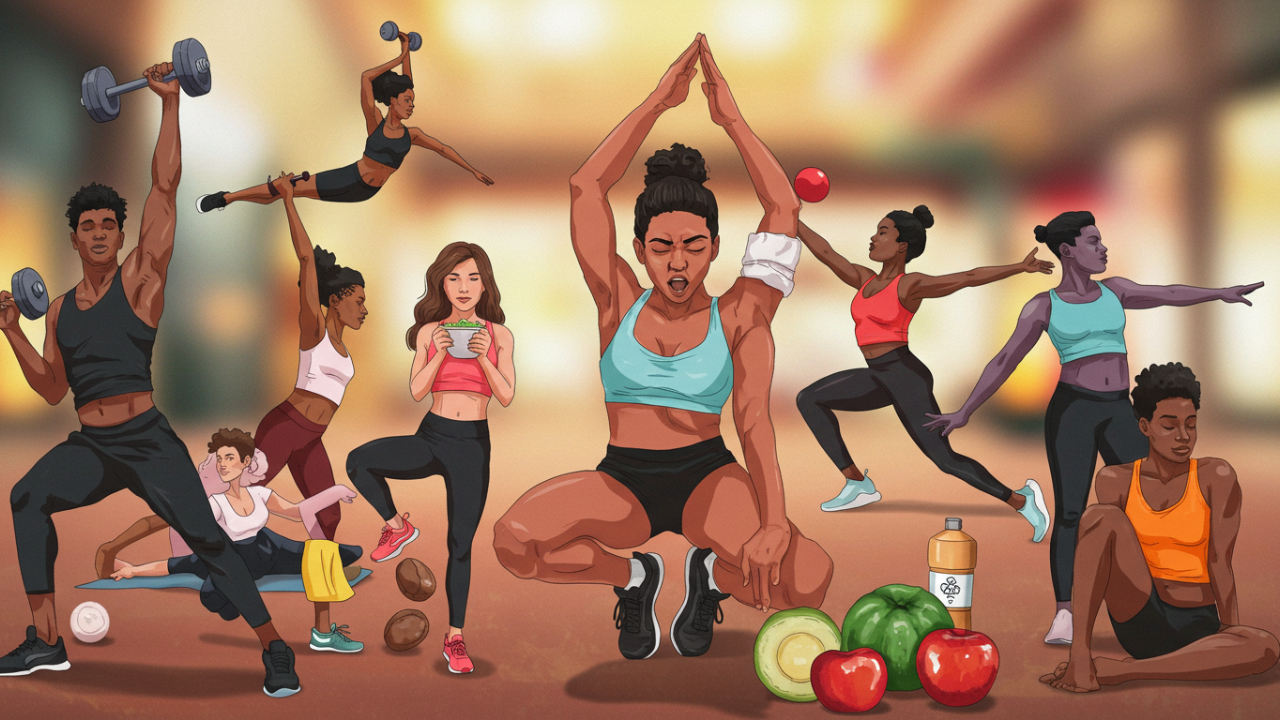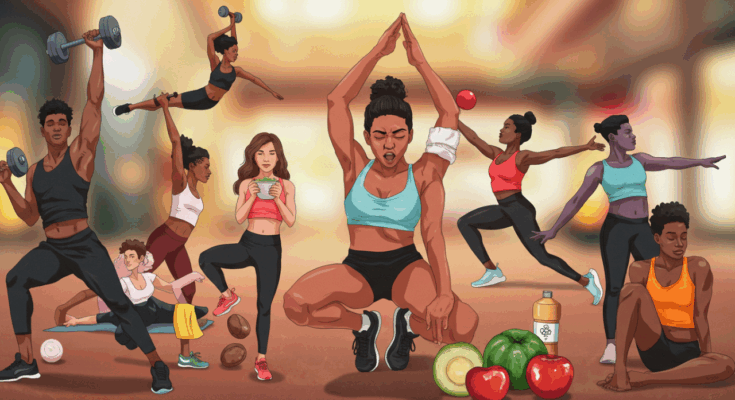As we navigate through 2025, the wellness industry is experiencing an unprecedented boom, valued at over $2 trillion globally. What started as niche practices like yoga and organic eating has evolved into a comprehensive movement that integrates technology, science, and ancient traditions. The Wellness Revolution isn’t just about fitness apps or green smoothies—it’s a shift toward proactive, personalized health that empowers individuals to live longer, happier lives. Driven by millennials and Gen Z, who prioritize mental health and sustainability, this revolution addresses burnout, chronic diseases, and environmental concerns. In this article, we’ll explore key trends, provide actionable strategies to incorporate them into your routine, and answer common questions like “How can I afford wellness?” and “Is it all hype?” By the end, you’ll have a roadmap to vibrant health that’s realistic and evidence-based.
Understanding the Wellness Revolution
The term “Wellness Revolution” captures the seismic change in how we approach health. Unlike traditional medicine’s reactive model—treating symptoms after they arise—wellness emphasizes prevention and holistic balance. A 2025 McKinsey survey reveals that consumers are increasingly seeking functional nutrition, beauty enhancements, and longevity solutions, with in-person experiences like retreats gaining traction post-pandemic. This shift is fueled by data: Wearable tech users report 20-30% better adherence to health goals, while personalized programs reduce stress-related absences in workplaces.
At its core, the revolution blends science with lifestyle. For instance, advancements in AI-driven apps analyze your sleep patterns to suggest tailored routines, answering the query “Why am I always tired?” by pinpointing issues like poor gut health or irregular circadian rhythms. Economically, it’s a powerhouse—corporate wellness programs now include mental health incentives, potentially saving companies billions in productivity losses. But it’s not without critics; some argue it’s commodified self-care. The key insight? True wellness is accessible, not exclusive—start with free practices like walking in nature.

Key Trends Shaping 2025 Wellness
2025’s trends reflect a fusion of innovation and return-to-basics, as highlighted in reports from Forbes and ELLE. Here’s a breakdown of the most impactful ones, with practical insights.
Personalized and Functional Nutrition
Gone are generic diets; 2025 is about bio-individuality. Functional nutrition—foods that target specific health needs—like gummy supplements for muscle recovery or pistachio milk for digestive health, is surging. Intermittent fasting, paired with gut-focused probiotics, addresses common questions like “How do I improve digestion?” Research shows it can enhance metabolic health and reduce inflammation.
Actionable tip: Use apps like MyFitnessPal to track macros, then incorporate adaptogens like ashwagandha for stress. Start with a 12-hour fast (e.g., eat between 8 AM and 8 PM) and monitor energy levels. For affordability, opt for home-made versions: Blend spinach, berries, and yogurt for a nutrient-packed smoothie costing under $2 per serving.
Tech-Integrated Mental Health Tools
Wearables top the charts, with devices tracking everything from heart rate variability (linked to stress) to sleep quality. Vagus nerve stimulation—via apps or devices—eases anxiety by activating the parasympathetic system. Sleep earbuds and sound alarms promote better rest, answering “How can I sleep better?”
Insight: A 2025 study links poor sleep to 15% higher depression risk; counter it with blue-light blockers and guided breathwork. Try free alternatives: Set phone alarms to nature sounds and practice 4-7-8 breathing (inhale 4 seconds, hold 7, exhale 8) before bed.
Nature-Based and Alternative Therapies
Forest bathing (Shinrin-yoku) and cold plunging are mainstream, reducing cortisol by 20-30%. Hyperbaric oxygen chambers boost brain health, while digital detox hours combat screen fatigue.
Practical advice: Schedule weekly nature walks—aim for 20 minutes in a park. For cold therapy, start with 30-second cold showers, building to 2 minutes. These low-cost habits enhance longevity, as per longevity-focused trends.
Corporate and Community Wellness
Workplaces are evolving with action-based programs and frequent incentives, like rewards for step challenges. Community events, such as wellness expos, foster connections.
Tip: If employed, advocate for mental health days. At home, join free online groups for accountability.
Actionable Steps to Embrace the Revolution
Joining isn’t overwhelming—start small for big gains.
- Assess Your Baseline: Track sleep, mood, and energy for a week using a journal or app. Identify gaps, like inconsistent nutrition.
- Build a Routine: Morning: Breathwork and affirmations. Midday: Walk or stretch. Evening: Digital detox and gratitude journaling.
- Incorporate Trends: Try functional snacks like protein gummies for on-the-go energy. Invest in a basic wearable ($50-100) for data-driven insights.
- Measure Progress: Reassess monthly. Expect improved focus and vitality within weeks.
Budget insight: Wellness doesn’t require luxury—free apps and home remedies suffice. For example, make castor oil packs for detox: Apply oil to cloth, place on abdomen, and relax for 30 minutes.
Benefits and Potential Challenges
The revolution promises longevity—studies show holistic practices add 5-10 healthy years. Benefits include reduced healthcare costs (up to 50% via prevention) and enhanced joy. Challenges? Over-commercialization—discern hype from science. Consult doctors for personalized advice, especially with conditions.
Clear insight: Sustainability is key; avoid extremes like prolonged fasting without guidance.
FAQ
What is the Wellness Revolution exactly?
It’s a global shift toward preventive, holistic health integrating tech, nature, and personalization, valued at $2T in 2025.
How can I start without spending much?
Begin with free practices: Journaling, breathwork, and nature walks. Apps like Insight Timer offer guided sessions at no cost.
Is wearable tech worth it?
Yes, for tracking trends like sleep and stress, but start basic—free phone apps approximate many features.
Can wellness trends help with mental health?
Absolutely—vagus nerve stimulation and cold plunging reduce anxiety symptoms. Combine with therapy for best results.
Are these trends backed by science?
Many are, like functional nutrition’s role in gut health. Always verify sources and consult professionals.






